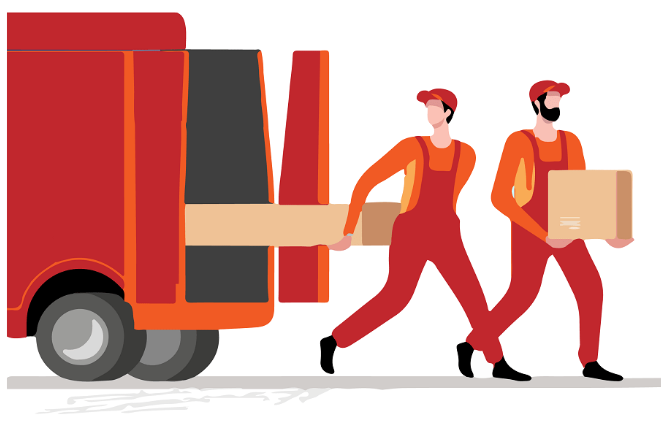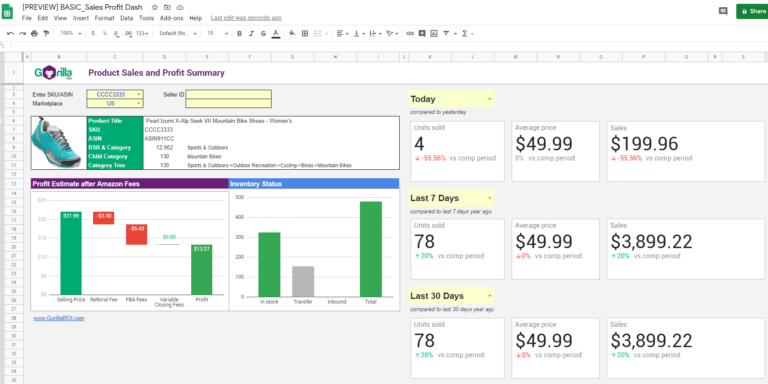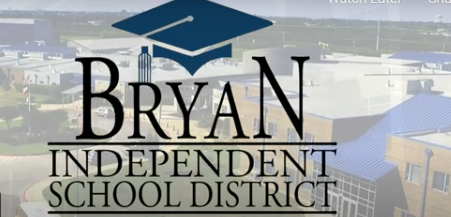Product Owners are the key players present at the center of every effort to create and deliver value to customers. In an agile environment using Scrum methodologies, Product Owners have a distinct and collaborative role in determining the overall direction of a project. They also act as a conduit, relaying vital information from upper management to other departments that are involved in the success of a project. The roles and responsibilities of a Product Owner may vary, encompassing various aspects of a business, including making strategic decisions and product design. A person aspiring to become a Product Owner can pursue a Product Owner Certification through a reputed training program to learn easily employable skills of Scrum as a Product Owner.
In this blog, we will dive into the roles and responsibilities of a Product Owner within an agile environment working with a Scrum framework. But let’s first understand what the Scrum framework is before getting into the role of a Product Owner. Let’s get started.
Understanding Scrum Framework
Scrum is a framework that provides a guideline for accomplishing a task or project based on agile, which is basically a philosophy and is centered around continuous improvement. It acknowledges that team learning is a continuous process; a team adjusts to fluctuating factors and evolves through experience. The constant learning process is built into the system along with short delivery cycles for the team to improve continually.
Scrum involves practicing ways of incorporating agile practices into your work environment as well as in everyday intra-team communication. It is structured to aid teams in adapting to the evolving requirements and conditions. However, Scrum is not entirely rigid and allows organizations of any scale to tailor its execution.
The Scrum framework, essentially, outlines a set of values, principles, and practices that agile teams adopt to deliver a project or service conforming to the highest quality of standards while steering a team through cycles of changes and upgrades in the product or service. It provides a guideline for Scrum team members, outlining their responsibilities and accountabilities. A Scrum team consists of a small group of members with a Product Owner and a Scrum Master, with the rest forming the development team. Scrum teams are often cross-functional, where the development team comprises developers, testers, graphic designers, and DevOps engineers. Together, they prioritize the work to be done and accomplish a task of product or service delivery.
The Crucial Role of Product Owner
The role of a Product Owner is multifarious to maximize the value of a product or service effectively. In the process of a business, they are involved in business strategy making, product designing, market analysis, and certain parts of project management. Here are six important roles and job responsibilities of a Product Owner:
Communication Between Different Strata
Among the many hats donned by a Product Owner, they act as a liaison between the various levels of a product lifecycle as well as between the development team and the stakeholders. They need to have good communication skills to seek the approval of the stakeholders involved in all major decisions taken. They should also be able to relay the necessary information, instructions, or deliverables to the development team.
Creating & Owning Product Vision
As part of the development team, the Product Owner is the MVP in defining goals and creating vision development projects. In the process of doing so, they correspond with the stakeholders and the development team to communicate the vision of the product or service repeatedly. Through regular communication, the Product Owner reduces the chances of uncertainty with stakeholders and ensures that decisions taken are in line with the product vision and goal in mind. They must ensure that the goals are clear and aligned with the business objectives.
Ensuring the Product Owner consistently holds a clear vision goal and communicates adeptly facilitates the team’s agility in navigating the rapid pace of product development within the agile framework. Alignment among team members is crucial for successful project realization. The Product Owner generates a comprehensive product roadmap detailing the vision, priorities, and trajectory of the product or service across time. This roadmap serves as both a progress update for stakeholders and a strategic reference guide for the team.
Managing Product Backlog
Another one of the important responsibilities of a Product Owner is taking care of a product backlog. This artifact defines a list of items that a Scrum team needs to abide by to accomplish the strategic decision as defined in the product roadmap. The Product Owner is responsible for developing and communicating the product goal while creating and communicating product backlog items clearly. To achieve this, a Product Owner works in collaboration with a Scrum Master and the other Scrum team members.
Prioritizing Needs
A Product Owner is also responsible for prioritizing the needs of a product or service development and delivery process, which involves managing the various aspects of such business, i.e., time, budget, and scope. Product Owners need to weigh priorities and make trade-offs in accordance with the requirements and objectives of the stakeholders. Product Owners should also be able to communicate an understanding of these trade-offs to upper management as well as the stakeholders.
Product Owners may face a situation when they have to turn down a request for change or addition to maintain focus on the vision and product roadmap. If the Product Owner fails to prioritize, it may set a process up for failure due to deviation from the roadmap.
Managing Budget, Scope, Delivery & Stakeholders
One of the important aspects of a product or service development lifecycle is its budget. Product Owners are responsible for managing this aspect of project development. Additionally, they have to manage the scope of the project as well as its scheduled releases to ensure the project is delivered on time.
Reviewing Feedback
The Product Owner is responsible for how the final product turns out, so they need to take a key role in evaluating the progress of a product or service development through iterations and feedback. The product backlog is adapted on the basis of the feedback obtained.
Relationship With the Scrum Team
Product Owners ensure that the development team can deliver the most value to a business through a product or service. They have an important role in a team, so it is better for them to set the goals, objectives, expectations, and rules at the beginning of a project. Furthermore, it is important for Product Owners to build great relationships with the Scrum Masters and developers in order to have a clear understanding of what needs to be delivered and in what order.
Scrum Master Collaboration
Product Owners and Scrum Masters share a common goal of creating a viable product or service by employing agile methodologies. Jointly, they should collaborate closely and maintain a team’s morale and productivity by effectively communicating and setting priorities based on business goals and relaying any necessary information to the various levels of the organization. Together, they can also encourage leveraging inter-team communication with other owners or Scrum Masters to improve the process of a current project as well as remove any issue that may come in the way through effective communication.
Effective Communication With the Development Team
A Product Owner should have regular and effective communication with the development team to ensure product backlog refinement. Product backlog refinement involves holding repetitive conferences with Product Owners, product managers, and the engineering teams to prioritize, enhance, and finalize the product before going towards sprint planning. The Product Owner collaborates with the development team to confirm shared understanding between all parties involved. Additionally, Product Owners collaborate with the development team to ensure product backlog items are maintained based on business value.
Interactions With Stakeholders
The Product Owners ensure effective communication with the stakeholders and act as liaisons between the development team and the stakeholders as well. They should seek the approval of stakeholders for various decisions and relay the same to the development team and others involved. Product Owners should communicate clearly with the stakeholders to ensure that the instructions and deliverables for the development team are effectively relayed.
Balancing Priorities & Managing the Product Backlog
Product Owners need to balance priorities of scope, budget, and time while also deciding how to order product backlog items for backlog refinement. With limited resources and ever-changing demands of the clients and customers, Product Owners need to master the art of prioritizing to create and deliver a product or service that caters to the specific requirements of the stakeholders as well as the customers. Thus, Product Owners may use some tools that are useful for making everyday decisions regarding the content and ordering of a product backlog.
Prioritization Techniques
Product backlog is not just about arranging the product backlog items in a list; rather it is about making important decisions that align with the vision and goals of a product or service but, most importantly, the needs of the customers. Here are some means of prioritization to bring clarity to the thought process and involve the stakeholders as well.
- Reach: This technique involves measuring the number of people or users a feature may impact.
- Impact: This involves measuring the potential impact on user satisfaction, engagement, revenue, or any other relevant metric.
- Confidence: This feature assesses the confidence in the reach and impact estimates.
- Effort: How and where the resources are to be used to develop the feature is shown through this process.
Continuous Refinement
Continuous backlog refinement is an important tool that helps development teams build features and functionalities that cater to the requirements of the customers as well as the needs of a business. Product Owners can group the backlogs into near-term and long-term items to be accomplished. Near-term items need to be outlined with a thorough structure comprising design and development along with process estimates. Long-term items may not require immediate attention, but having a rough estimate may be good.
Challenges Faced by Product Owners
A Product Owner does many things, but their role can be quite challenging, too. They have several responsibilities that highly depend on context. They have to manage various aspects of product development, all the while dealing with the expectations of users and stakeholders. Here are some of the common challenges faced by Product Owners in their professional sphere. Having an understanding of these situations may help future Product Owners avoid unnecessary failures and make apt decisions.
Stakeholder Management
As a Product Owner, it is their responsibility to deal with stakeholders and maximize product value simultaneously. But that responsibility requires unending cooperation with developers, team members, and managers as well. Often, they need to align product goals with stakeholders’ requirements to make decisions and provide a single, shared understanding of a product. This is where it becomes difficult as the choices have to be made by keeping in mind the needs and requirements of different parties involved. However, Product Owners should learn to say “no” when absolutely necessary, as some ideas may not hold much ground.
Having Distributed Teams
Remote work has gained immense popularity even after the pandemic years, which has improved flexibility in teams working towards a shared goal. But the downside is that a Product Owner is often left working separately from his team, which can be a source of challenge for them. There could also be a lack of trust and feedback from teams, as well as chances of miscommunication, low engagement, and misalignment, leading to slow progress on a project.
Overworking With Multiple Teams
Product Owners often work on different product features, which require them to collaborate with different Scrum teams. This may cause them to lag behind in one project while becoming engaged in another. Thus, they may be able to devote less time to product discovery, strategic work, and the backlog. This may result in a slowing down of progress in one or more projects. To overcome this challenge, it is important for Product Owners to collaborate closely with Scrum Masters on different projects and work in tandem with them to provide an efficient, agile environment.
Sudden Changes or Requests
Unexpected or unscheduled changes or requests may crop up from time to time during a project development, which may result from an unforeseen circumstance or issue or even from elsewhere. This may put pressure on the Product Owner as well as the entire product development process. Therefore, it is important for Product Owners to assess the incoming requests accordingly in terms of urgency, risk, and complexity.
Collaboration With Scrum Master & Development Team
A Product Owner works in collaboration with the Scrum Master and the development team in sprints towards their common goal. The short-term driver for them is the sprint goal that they create together at the sprint planning sessions of every review meeting. With Scrum, there is collaboration, communication, and transparency throughout the development process, allowing teams to quickly adapt to changes responding to changes in customer requirements and market conditions. Delivering value in sprints of two weeks or less allows the development team, as well as the Product Owner and Scrum Master, to identify areas of improvement and make changes as required.
The Product Owner works with the team to identify which tasks should be prioritized to achieve their goals. Product Owners and the development team are connected through a common goal of meeting customer needs. The shared roles and responsibilities between them ensure that products are delivered on time, within budget, and in accordance with customer expectations.
Key Skills & Qualities of a Successful Product Owner
To succeed in the role of a Product Owner, a professional Product Owner should have a combination of skills that enable them to manage a product from ideation to delivery effectively. Here are some important skills that a Product Owner should have:
- Product Management
Product Owners should be able to prioritize, define, and manage concerned product features along with their requirements, as well as identify market opportunities & understand user requirements.
- Project Management
Product Owners should also be able to apply their knowledge and skills along with some learned techniques and tools to achieve project goals as well as fulfill project objectives successfully.
- Community & Collaboration
Product Owners should have strong communication skills to communicate the vision, goals, and objectives of a project with the stakeholders, upper-level management, Scrum Masters, and development team.
- Agile Development
As a Product Owner, a professional should have knowledge of agile development methodologies and frameworks to help them manage their backlog, plan and conduct sprints, and work in collaboration with the development team.
- Subject Matter Expertise
Domain knowledge is important for a Product Owner to thrive. This is obtained through certification, continuous learning, and experience in the field.
Conclusion
A Product Owner is a Scrum Professional who oversees the product roadmap while ensuring that the business derives the most value from the products or services delivered through a project. They not only ensure that all members of the Scrum team are aware of the vision, objectives, goals, limitations, and areas of a product but also serve as a liaison between two or more levels of organization, particularly on the part of the stakeholders. Thus, the Product Owners are the MVPs in a Scrum team who are responsible for delivering value-based products for optimal ROI on such products and services. Becoming a Product Owner requires incorporating the essential skills through appropriate training and Product Owner certification.
FAQs
Q1. What are the key differences between a Product Owner and a Product Manager?
A Product Owner is more focused on the product goals and is more concerned about bringing the project manager’s vision to life by guiding a development team. On the other hand, a product manager is responsible for the entire project management process by bridging the gap between business processes and the ultimate goal of a project.
Q2. What is the role of a Product Owner vs a Scrum Master?
Although there is much overlap between the roles of a Product Owner and that of a Scrum Master, a Scrum Master assists a Product Owner while leading an agile development team. A Product Owner oversees the product backlog and ensures that the products offer the most value for a business.
Q3. What is the role of PO in sprint planning?
A Product Owner works with the developers in a sprint meeting to refine the product backlog items as may be deemed necessary. They discuss the items that are done and what is yet to be achieved. They are involved in the discussion of the sprint goal, backlog, and ways in which work can be carried out.







